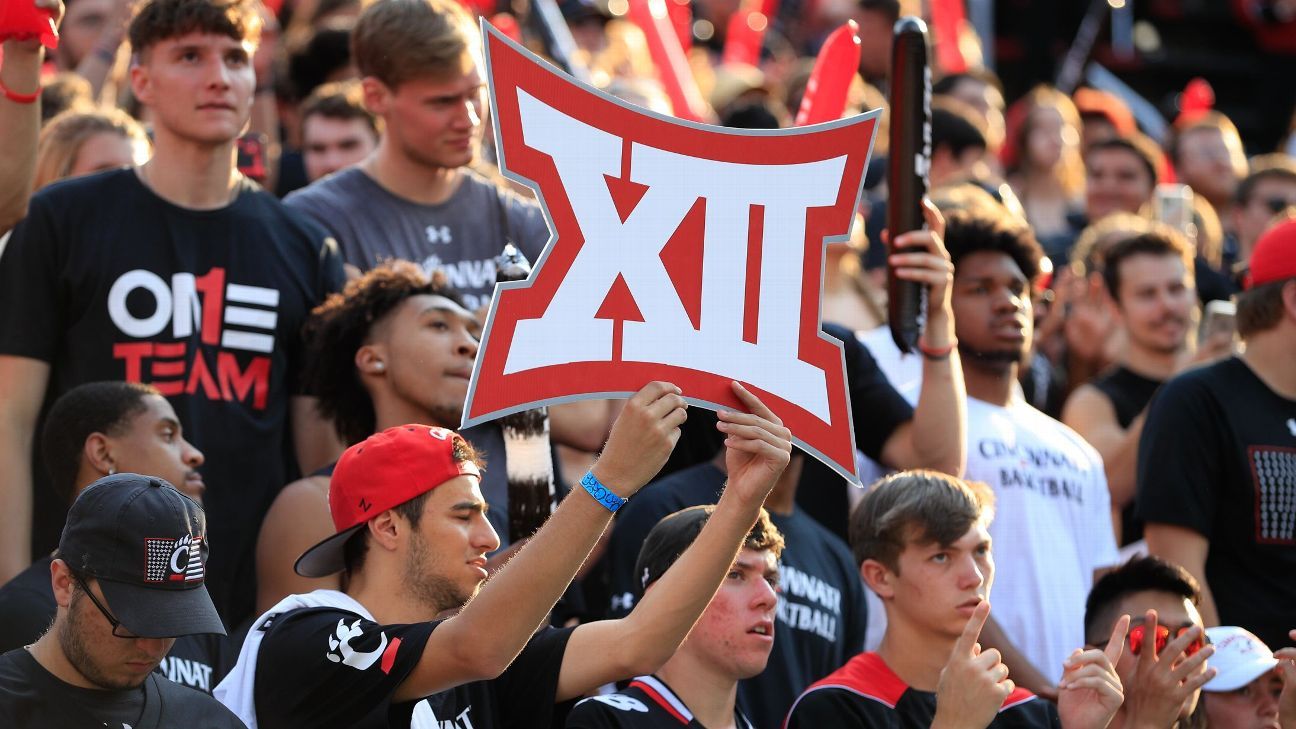
College football’s Great Realignment has been on pause in recent months.
After the seismic moves we saw in recent summers — Oklahoma and Texas announcing they were joining the SEC in 2021, USC and UCLA announcing they were joining the Big Ten in 2022 — there aren’t all that many conceivable earthquakes remaining. But with the ACC unsettled, members of the Pac-12 continuing to wait (and wait, and wait) for numbers on a new media deal, and the Big 12 looking to do something bold, discontent and uncertainty are high.
With the ACC’s long grant-of-rights deal still legally impenetrable at the moment — and, therefore, the thought of ACC programs leaving for another conference remaining unrealistic in the short term — the next if-then moment is pretty well understood: At some point, the Pac-12 will announce its new media rights numbers, and either they will be good enough or they won’t.
If they’re comparable to the Big 12’s recent numbers, then the Pac-12 will likely keep its 10 remaining members in place and attempt to add two more. (Current indications are that San Diego State and SMU are at the top of the expansion wish list.) If the numbers are drastically inferior, things could get weird. The easternmost members of the conference — some combination of Colorado, Utah, Arizona and Arizona State — could welcome an aggressive advance by the Big 12. That could create a potential domino effect: Maybe the Big Ten takes an accelerated look at Oregon and Washington (and maybe Cal and Stanford)? Maybe those schools look the Big 12’s way?
The Pac-12’s persistent delays in announcing media rights certainly don’t build optimism, but for now I continue to assume that odds favor the Pac-12 patching together some sort of coalition of broadcasters and promising just enough annual revenue that it keeps its members in place for now. But if there’s one constant in recent summers, it’s that our assumptions are consistently wrong.
The next decade or so of realignment could be both interesting and depressing
We’re facing one of two futures in this era of college football: Either (a) the Big Ten and SEC become the sport’s two dominant financial forces, creating more of a Power Two of sorts than a Power Five, or (b) the Big Ten and SEC become so powerful that we end up with the dreaded “super league” situation, in which they become either a formal or informal top division for the sport.
There’s a chance that, when the ACC’s grant of rights gets closer to its expiration, both the Big Ten and SEC pluck away its most valuable schools, ensuring that almost all of the sport’s big brands reside in one of two neighborhoods. We have seen plenty of speculation that the members of these conferences will form some sort of super league among themselves, a rather fatalistic vision. But there really won’t be a need for any formal separation at that point — the Big Ten and SEC will form the anchors for all of college sports regardless.
That doesn’t have to be completely unhealthy, by the way. Look at European soccer: Over the past 10 years, teams from England’s Premier League and Spain’s La Liga have scooped up 15 of 20 spots in the Champions League final and won all but one title. But well-run (and well-monied) clubs in other countries — Germany’s Bayern Munich, France’s Paris Saint-Germain, a varied smattering of Italian clubs — still make big runs when they have all their ducks in a row. Germany still has a product attractive enough to outdraw the Premier League in terms of attendance, and the pressure that comes with extreme riches has led to loads of panic spending and panic firings from Barcelona and many English clubs. That opens the door for well-run clubs outside of those areas to take advantage.
As long as schools in other conferences have a reason to invest, and fans continue to have a reason to care, football in conferences outside of the Big Two can remain both relevant and exciting. None of this power concentration is optimal, but a reasonably healthy ecosystem can still exist.
More than any future realignment moves, the single most important feature, when it comes to the health of the Big 12, ACC and Pac-12, could be the structure of the upcoming 12-team football playoff. For 2024 and 2025, the playoff will feature a minimum of six conference champions, four of which will get first-round byes. That alone makes winning those three conferences vitally important and worth striving (and investing) for. With that requirement in place, these conferences will remain viable for that reason alone. But there’s no guarantee the requirement will remain in place when contracts are renegotiated for 2026 and beyond. If the Pac-12 gets severely diminished in coming realignment moves, that could impact things, as could a power move from a figure like SEC commissioner Greg Sankey.
If the right people want further power conference concentration, and if the television revenue is there for it — it certainly has been so far, but there’s no guarantee that continues — it’s hard to know what might stop it. And we’ve potentially seen some of the last big home run swings available; there really aren’t many huge brands left to change conferences unless the Big Ten and SEC start stealing from each other.
For now, though, let’s daydream. For the conferences that are falling behind the Big Two, let’s think of some big swings for them to take. A Big 36? A Pac-91? Why not? Here are three (mostly) unrealistic but fun scenarios for the future of college sports.
(Please remember: There are no wrong answers in the brainstorming process.)






